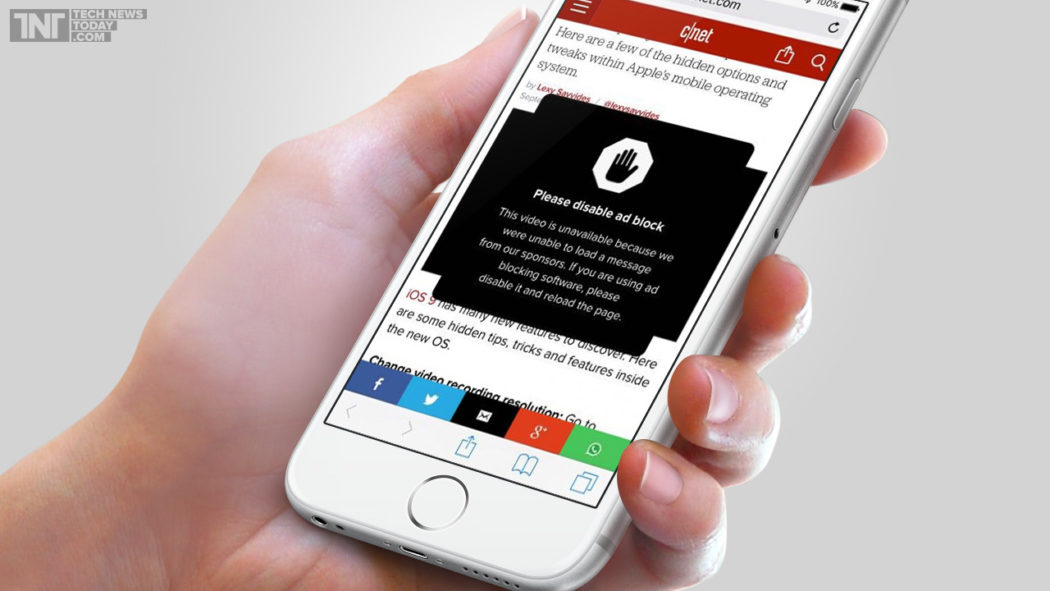The war over ad blockers
When you are trying to follow a tantalizing online headline to a news story, nothing is more annoying than a screaming popup advertisement or a slow-loading video pre-roll promotion that gets between you and the content you want.
Online users have long complained about intrusive ads that interrupt their reading or viewing experience on the web.
Enter ad blockers. In the past year, developers have marketed scores of downloadable software that effectively renders most advertisements invisible. Problem solved, right?
Not exactly. While ad blockers ease the pain of web users, they may inflict considerable harm on publishers who provide the content the users are eager to access.
Ads pay for content
Most publishers get revenue from their advertisers based on impressions – the number of times the ad appears on a page that a user views – or on clicks – the number of times someone follows a link from the ad to the product. Subtract significant numbers of ad views from the equation and revenue drops.
Online advertising has created a Catch 22 for publishers, according to Mathew Ingram of Fortune.
In order to attract eyeballs, publishers may “feel they have to pump out as much shallow click-bait as they possibly can,” Ingram said. But that cheapens their site and makes them even more reliant on advertising because users are unlikely to pay for low-quality content.
Ad blockers threaten to make matters even worse for publishers.
Ad blockers could cost publishers billions
Juniper Research estimates that ad blocking software could cost digital publishers more than $27 billion by 2020 out of projected ad spending of $240 billion. A report by Pagefair, estimated ad blockers cost publishers $22 billion last year as usage increased by more than 40 percent for a total of nearly 200 million active users of the software globally.
Increased news consumption on mobile devices has added a push to the trend as slow-loading ads are particularly annoying on phones and they can drive up data usage costs.
According to the Juniper report, ad blocking offers the additional benefit of “faster page load times, creating a better user experience.”
Wounds self-inflicted?
Some argue that publishers have brought the problem on themselves.
Ingram noted that news publishers have acquiesced in or even encouraged advertiser demand for intrusive advertising at the expense of giving a good experience to their users, who can usually go elsewhere for the content they want.
He argues that ad blocking is a predictable response to “a hellish landscape of crap and gimmicks” that online advertising has become.
Others believe that publishers’ fears are exaggerated.
Felix Salmon said growth in online readership would translate into more page views with ads that should more than offset increases in the use of ad blockers. The movement to ad blockers could also force publishers to improve their advertising formats, Salmon said.
Apple, Google and Facebook join the fray
Still, the war over ad blockers promises to rage on, and it has pit web giants Apple, Google and Facebook against one another.
Apple fired a major salvo last year when it launched Ad Block Plus software for the Safari browser and iOS.
The software blocks advertisements with a couple of significant exceptions. First, Apple’s iAd platform let’s developers embed ads in their applications, with Apple taking a 30 percent share. Since those ads are in apps rather than coming from ad servers that the blockers can detect, Apple ads are not affected. Secondly, for a fee, Apple will also “whitelist” web ads, enabling them to bypass the blockers.
Advertising is still a relatively small part of Apple’s business, accounting for about less than $500,000 in revenue in 2014, or well under one percent of total revenue.
Apple’s move was widely seen as a shot at Google, which in 2014 collected nearly $60 billion annually from search advertising, nearly 90 percent of its revenue.
However, Facebook, another behemoth that is highly dependent on ad revenue, recently joined the fray, announcing it had developed a workaround that enables ads to appear.
“We’re disappointed that ad blocking companies are punishing people on Facebook,” a Facebook spokesperson said.
Publishers react differently
Publishers so far have greeted ad blockers with different approaches.
The Washington Post blocked users who employ ad blockers from seeing Post content. Instead, users are asked to turn off the software if they want to proceed. The Guardian asks readers using blockers to become paying members of the news organization.
The German corporation Axel Springer has taken one popular blocker to court, saying it is unfair to let some advertisers pay to bypass the system while other advertisers are blocked.
Sponsored content provides alternative
One growing alternative to traditional ad formats is sponsored content, which mimics the form of editorial content. While some question whether this format is simply disguising advertising as editorial, major news organizations including The New York Times and The Washington Post have embraced sponsored content, creating their own internal teams that produce sophisticated storytelling for major national brands.
Because it takes the form of conventional online storytelling – whether with text, graphics or videos – it can avoid the intrusiveness of traditional advertising and users can chose to click on the headline based on relevance. These formats work particularly well on mobile phones.














There are no comments
Add yours